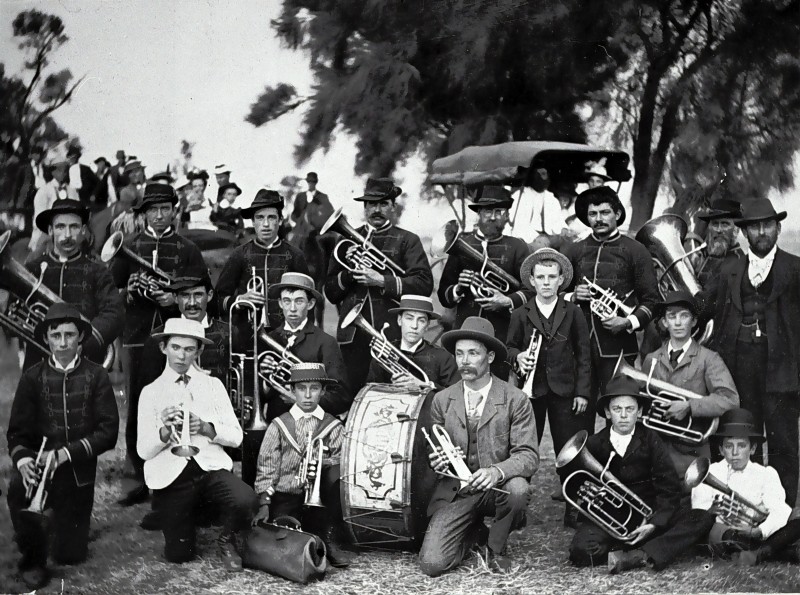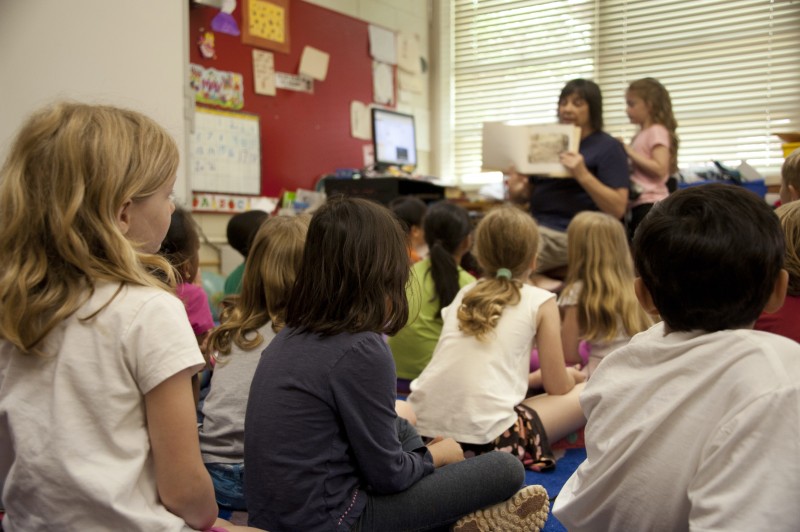The Rhythm for Reading blog
Teaching Musical Notation and Inclusivity
31 October 2022The teaching and learning of musical notation has become a hot new topic since its appearance in the Ofsted Inspection Framework published in July 2022.
For too long, musical notation has been associated with middle class privilege, and yet, if we look at historical photographs of colliery bands, miners would read music every week at their brass band rehearsals. Reading musical notation is deeply embedded in the industrial roots of many towns.
As a researcher I’ve met many primary school children from all backgrounds who wanted to learn to read music and I’ve also met many teachers who thought that reading music was too complicated to be taught in the classroom.This is not true at all! As teachers already know the children in their class and how to meet their learning needs, I believe that they are best placed to teach musical notation.
There are many perceived problems associated with teaching musical notation in English primary schools, and a top one is that many teachers do not read music. It is so easy to address this issue. Using the techniques of the Rhythm for Reading Programme, teachers can learn to read music fluently in time with a backing track (think Karaoke) in five minutes. Yes - five minutes!
Empowering school staff to read music offers a cost effective and strategic approach to raising standards in reading across the curriculum.
Stay tuned for the next post, when I’ll discuss ways to meet all of these challenges.

Time and Space: From Rockets to Reading development
24 October 2022
From calculating the magnificence of planetary orbits to the pulse of electrons in the atomic clocks first used by NASA in the 1960s to control space exploration, rhythmic precision has been the focus of scientific research for millennia. In fact, the first mission to the moon was delayed because a lack of reliability among the best clocks of the era, which lacked sufficient precision to guarantee that the Apollo mission would not miss the moon altogether. It was only when the atomic clock was developed that NASA knew that the rhythmic precision of the movement of the caesium electron particles was sufficiently reliable to sustain the controlled trajectory of the Apollo 11 moon landing. This principle can be backwards engineered to apply to reading as well. If the rhythmic element of a child’s reading lacks a strong trajectory, there is insufficient coherence between individual words and syllables. This is why the grammatical structures of the language are not detected by the child while she reads and the message does not land. When this happens, reading becomes nothing more than a frustrating exercise in decoding.
Just as NASA realised that controlling the trajectory of a rocket depended on the regularity of tiny units of time, so must teachers realise that reading is a series of phrase shapes that are guided by rhythm and fuelled by cognitive attention.
Rhythm and Rainbows
17 October 2022
When I meet with teachers, they want to know exactly how the Rhythm for Reading programme works. The first thing to establish is that rhythm is all around us. That cannot be denied. All around us there are tides, seasons, migratory flows of animals and birds. In our own bodies, the physicality of rhythm is present in our heartbeat, our breath, the way we chew food, run, walk and swim. There are also multiple rhythmic patterns in the way that we communicate with each other, ranging from soothing to abrupt utterances. These are universal responses to rhythms that the human nervous system recognises in relation to our breath, our heartbeat and our physical activity.
In fact, communication through language is related to the role of the nervous system in the regulation of our behaviour. If we say, “Watch out!” our message is urgent, abrupt and short. We would have delivered it with a boost of energy and a fast trajectory. The trajectory is the rainbow shape from the first word to the final word of an utterance and it is fuelled by the energy of speaker’s voice and secondly by the receptivity of the listener’s attention. Someone, hearing “Watch out!” who doesn’t speak English would have understood the meaning of the words, because of the universal shape of the abrupt utterance as a warning signal.
In a longer utterance, the opposite is true. The trajectory from the first word to the final word involves tiny adjustments in the lengths of syllables that relate to one another in grammatical speech. These subtle signals can only be detected if the energy in the voice is reliable and consistent enough to bring coherence to the shape of entire trajectory.
Fortunately, the evolution of our articulatory system in coordination with our breath and our ability to monitor our speech utterances ensures that we achieve all of these feats rapidly and automatically in hundredths of a second. This is why, for the most part, we’re unaware of the rhythmic patterns in our everyday speech.
Rhythm, breath and well-being
10 October 2022
Breath is an important part of the Rhythm for Reading programme. We use our voices as a team in different ways and this engages our breath. In the early stages of the programme we use rapid fire responses to learn the names of musical notes and our breath is short, sharp and strong - just like the sounds of our voices. Even in the first session of the programme we convert our knowledge of musical notes into fluent reading of musical notation and when we do this our breath changes. Instead of individual utterances, we achieve a flowing coherent stream of note names and our breath flows across the length of the musical phrase for approximately six seconds. This time window of between five and seven seconds is a universal in human cultures. Did you know that the majority of poems are organised rhythmically into meaningful units of between five and seven seconds in duration?
A long slow exhalation is associated with calming the nervous system, even though the energy in the Rhythm for Reading session is playful and the sense of teamwork is energising. The unity between the children and teachers taking part in the programme fosters a sense of belonging which further boosts well-being alongside the calming effect of the long slow exhale.
When I first meet teachers, they often share that they feel anxious about reading musical notation, but one of the most beneficial aspects of taking part, is that our long slow exhale as a group is actually an effective way to sooth anxiety. The smiles at the end of the first musical phrase show a powerful release of emotional tension through the unity of rhythm and breath.
Rhythm, attention and rapid learning
3 October 2022
There are many different forms of attention. Neuroscientists have studied the development of cognitive attention in children as well as the different types of attention that we experience. Boredom and repetition generate a trance-like state of attention, whereas novelty and a switch in the stimulus generate a shift and a rapid reset of attention. The attention span exists to protect us, to feed us and to ensure that our genes succeed us in future generations. This is why the attention span is adaptable and can be trained to become longer or shorter using reinforcements such as rewards or threats. Ultimately, the attention span is involved in predicting when and where the next reward or threat will take place.
If a chid has experienced a threatening situation such as a war zone, they are likely to flinch in response to loud noises and their attention is likely to be highly vigilant, having been trained by the environment to monitor potential threats. A chid raised in a calm and enriched environment is likely to have fostered a natural curiosity for the world around them and to have interacted in reciprocation with it. Conversational turns in such an environment are the rhythmic hallmark of social interactions, and according to researchers contribute to emotional well-being and language development (Zimmerman et al., 2009).
The Rhythm for Reading programme offers an opportunity to move children away from a vigilant state, to a rhythmically responsive form of attention that involves reciprocation and builds receptivity and stamina. The attention system is dynamic and is particularly responsive to setting and emotional set point. If a child was threatened repeatedly at school, for example by a bully, then vigilance in the attention system would affect the child’s learning to some extent.
By the same token, it’s important that Rhythm or Reading sessions take place in the same place, on the same day of the week and at the same time of day to establish the regularity of exposure to rewarding experiences. Knowing where and when positive experiences occur, such as feelings of personal safety, social connection, a boost to well-being, engagement with rewarding patterns and calming breath work, which are nurtured during Rhythm for Reading sessions is important. The anticipation and experience of weekly Rhythm for Reading sessions enables a child’s attention system to recognise the sessions as a ‘real’ part of their environment. A consistent pattern in the children’s lives enables a deeper sense of anticipation and supports rapid learning during the programme.
Zimmerman, E.J., Gilkerson, J.,Richards, J. A., Christakis, D.A. Xu, D., Gray, S., Yapanel., U. (2009) Teaching by listening: The importance of adult-child conversations to language development. Pediatrics, 124 (1), 342-349, doi: 10.1542/peds 2008-2267
